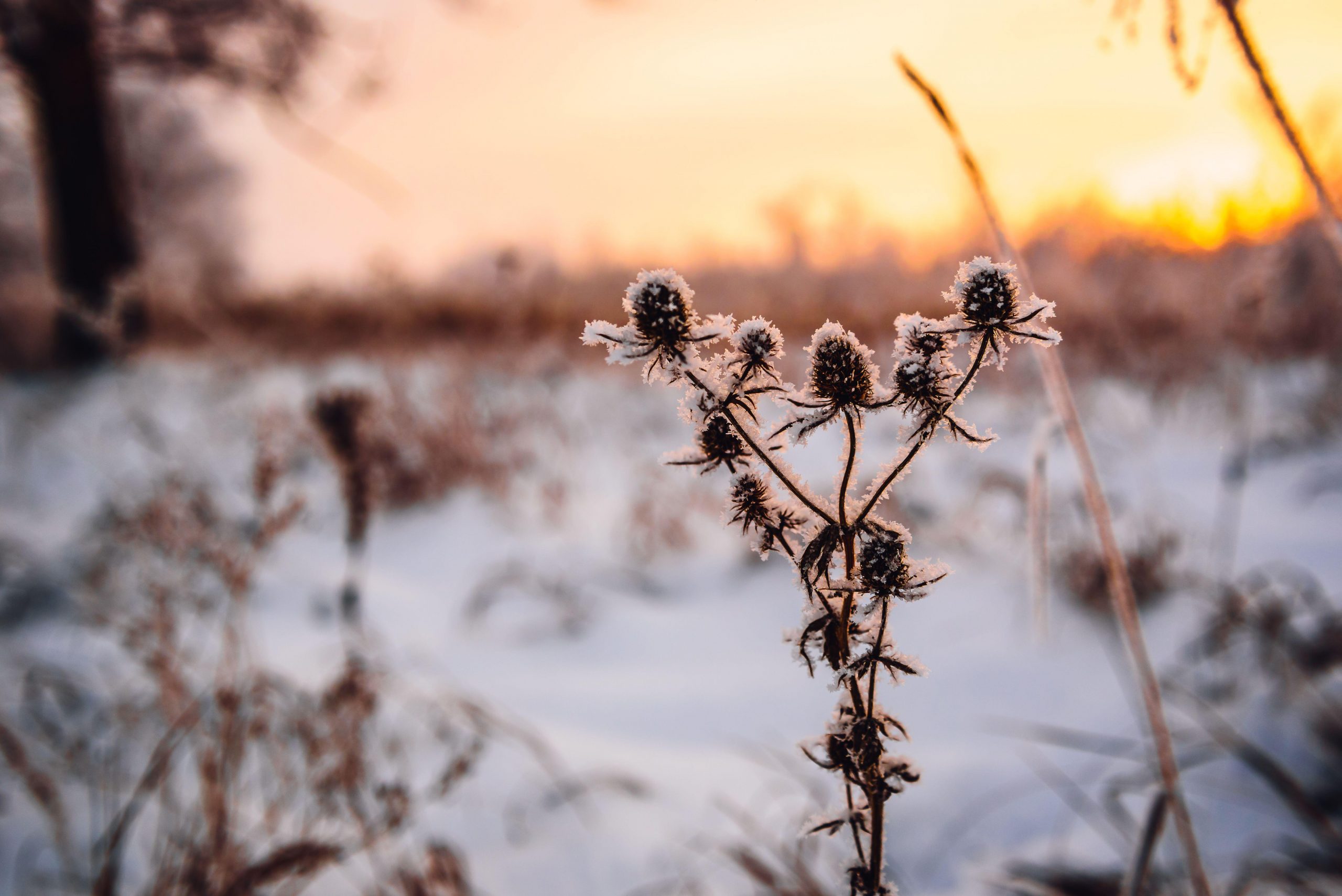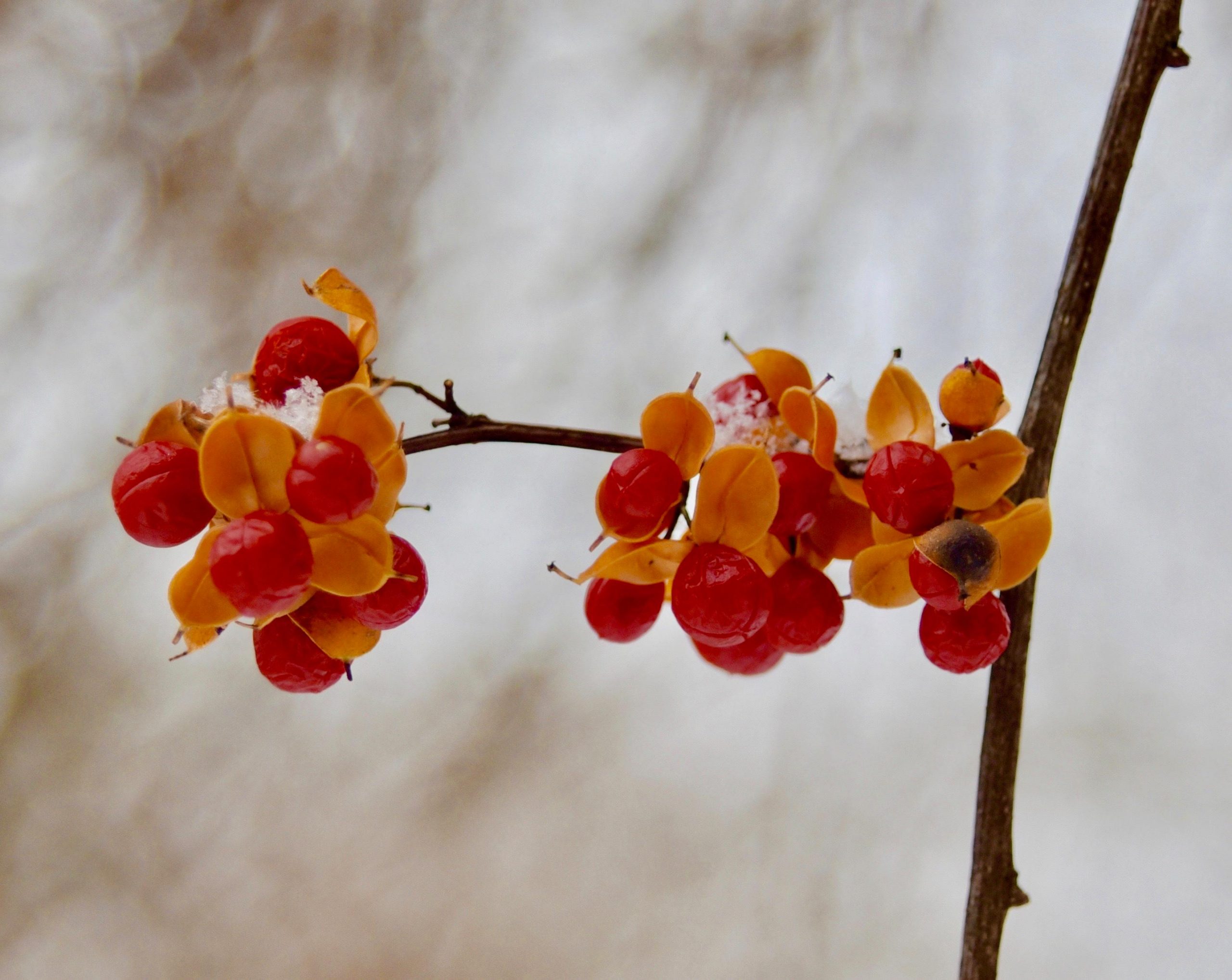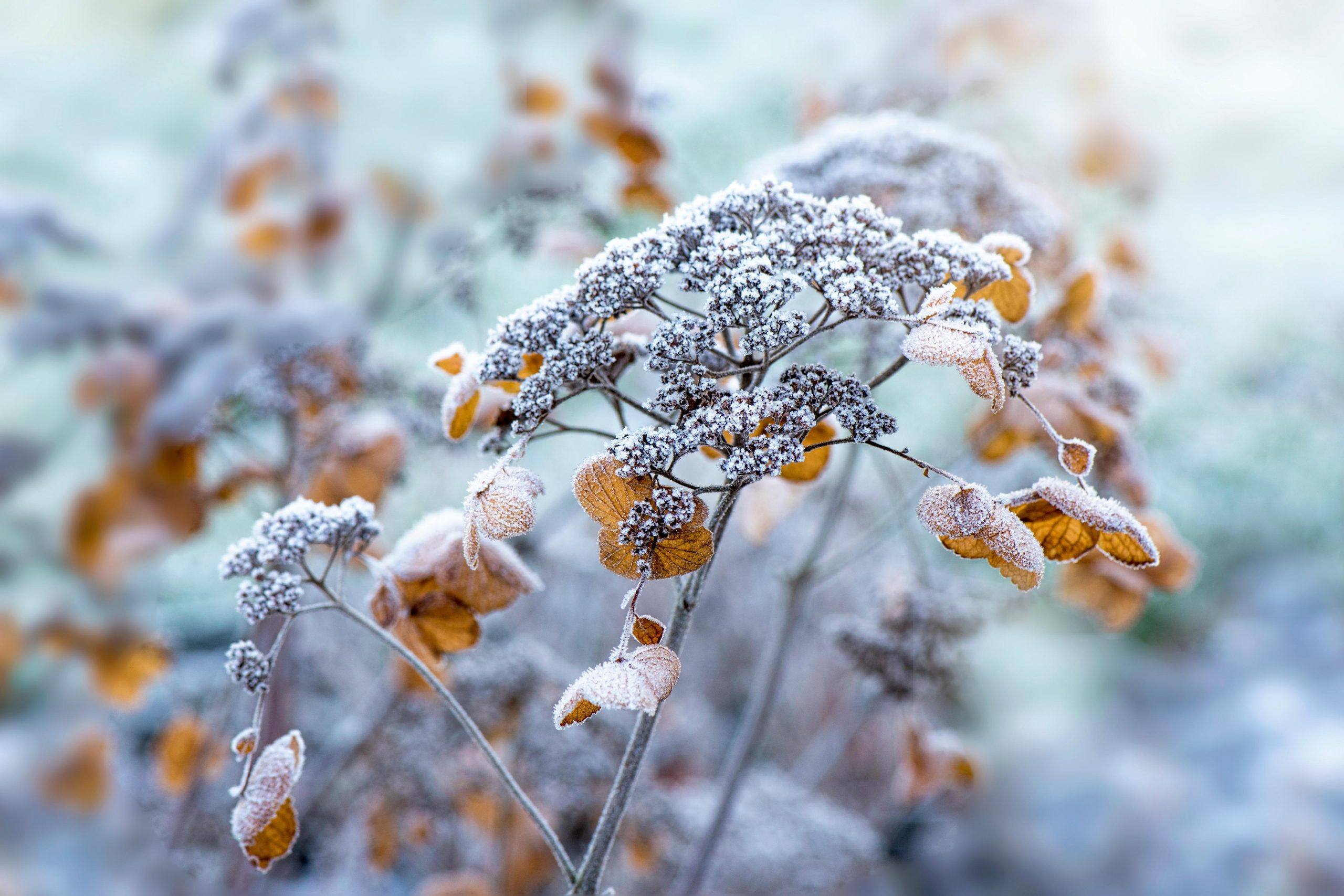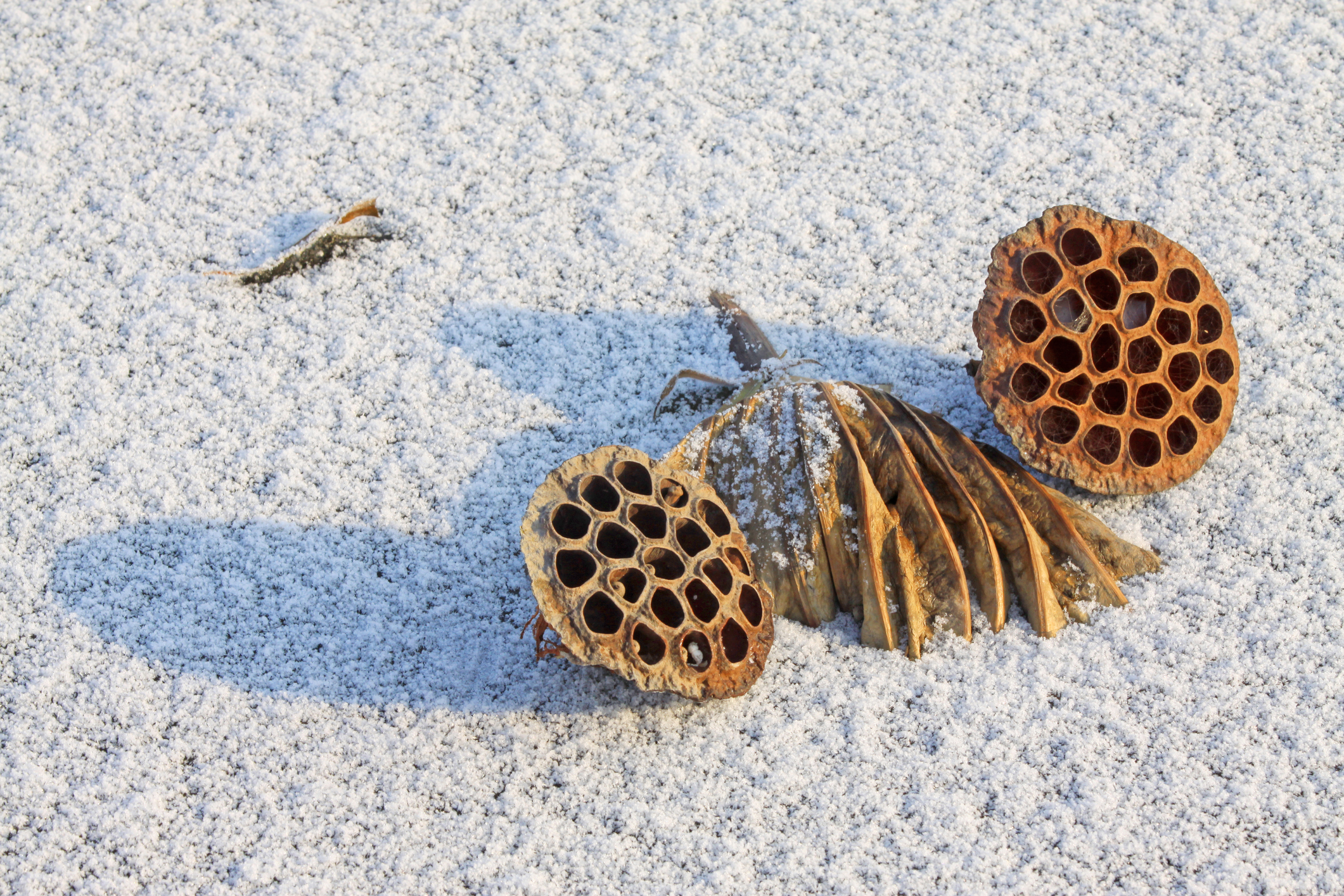The flowers that look spectacular when the frost starts to bite
Resist the urge to tidy the garden and, come the frosts, you will be rewarded with a glorious display of glittering seedheads, says Steven Desmond.

This has been rather a good year for the admirer of garden fruits of every kind, due, no doubt, to the exceptional weather in August. I was recently travelling in Yorkshire, where I witnessed the bumper crop of cordon apples in the kitchen garden at Nostell Priory and the arresting sight of elegantly ripe passion fruit on a garden wall in Hull. As this was a fruit I often enjoyed eating from the garden fence in rural Zambia as a boy, this naturally gave me pause for thought on several fronts.
The garden in autumn is always full of fruits of many forms, whether from trees, shrubs or herbaceous perennials. This is one of the endless list of minor pleasures for the observant gardener and a constant reminder both of the wonder of seasonal change and the unpredictability of British weather. Although things may certainly be warming up, those familiar vagaries continue, so we are never quite sure what is coming next.
As uncertain as the weather and its consequences is the progress of fashion. Until recently, the standard advice was that, when the weather finally started to close in after the clocks changed, the plants in the herbaceous border should be cut down to the ground. Now that the enduring influence of Karl Foerster and his disciples has finally brought a new approach to herbaceous planting, we are more inclined to think of keeping the plants standing, imagining them looking superb on frosty mornings, at least until the end of the year. Certainly, the imagination is a wonderful tool, but practical reality balances out such excess with a general sobering up. Those looking for the singular beauty of seedheads in the border will have to do their homework carefully and consider how to address the consequences of their actions.

Let’s start with some good doers. Top of my list is the genus Eryngium, the sea hollies, native to many lands from Spurn Point to Afghanistan and Argentina. The one thing those places have in common is deep sandy soils. I pick out one favourite, Eryngium bourgatii. The steely-blue flowers change imperceptibly into prickly seedheads as autumn approaches and they look stiffly stately even after the seeds have been shed or taken by mice, which can sometimes be seen hanging on for grim death. The seedlings appear in the spring, when it is the gardener’s task to spot them at an early stage and either cherish them or ping them out with the point of a fern trowel.
This is a key point. If you leave everything standing so that you can revel in the lasting silhouettes, there will be seedlings everywhere in due course and you will have to manage the situation, either with meticulous rigour or by watching the survival of the fittest. Like all gardening, it doesn’t do itself. You need to make decisions and act on them.

Others in the same mode include the various rudbeckias, surely at the height of their public fame right now, and alliums, the ornamental onions, the purply-blue sculptural heads of which turn gradually to silver-white and then brown over summer. Their grassy seedlings are tedious to winkle out, so the same philosophical debate is called for. A favourite of mine is Asphodeline lutea, a silvery, slender thing with yellow flowers that turn into shiny black seeds. These fall close to their parents, so, in no time, an individual becomes a burgeoning clump. That’s more in my line.
If your inclination is more to semi-natural gardening, the teasel will be your friend. This has the capacity to lie dormant for years until disturbance and light come its way, when it forms such an elegant thing with its fascinating oval blooms featuring a plimsoll line of lilac a third of the way up. The seedheads are equally compelling with those Velcro-esque soft hooks. Mind you, it will be with you for life in seedling form. The same applies to honesty, Lunaria annua, with its moon-like vertical discs. I find this turns up in scruffy corners and is generally welcome. This is just as well, as it will keep turning up after you’ve gone.
Exquisite houses, the beauty of Nature, and how to get the most from your life, straight to your inbox.
If you get bored with dry seedheads, try something fleshier. I’ve always admired the genus Actaea for its waxy berries, black, red or white according to species. The plants look superb in a woodland-garden context. It is true that they are poisonous, hence the name baneberry, but then so are lupins, foxgloves, laburnum and many more. You decide.
Then there are the various Eucomis, the well-named pineapple lilies from southern Africa, which look consistently gorgeous in leaf, flower and fruit. They do need exactly the right spot, such as the botanic garden at Ventnor on the Isle of Wight, where they luxuriate in abundance. The last word in visual fascination along these lines is Rheum alexandrae, the noblest of rhubarbs, the pendulous bracts of which attract the curious all season long, whether in bloom or seed.

If we allow our eyes to wander from the border to the wall and fence, some climbers are worthy seed-bearers. Every clematis is variously festooned with old man’s beard of one kind or another. I remember the hopeless chaos of trying to sow clematis seed in potting-shed trays as a novice before I realised that it pays to cut off the furry tails that float so readily in the air. While I’m on the subject, the same attraction and frustration applies to the seedheads of the lovely genus Pulsatilla, the pasque flowers.
A wall shrub worth cultivating for its seeds alone is Celastrus orbiculatus. This seems never to have caught on here, but is among the handsomest of its kind. It is related to the genus Euonymus and its seeds look like a designer version of our native spindle bush, with its scarlet, shiny seeds emerging from four-part yellow cases. The spindle-bush version is orange and pink, an unnervingly zingy combination, abundant this year in hedgerows, with its autumn foliage raspberry red.

In some ways, the classic flower for seedhead appreciation is helianthus, the sun- flower. This has everything for the family garden: it grows ridiculously tall, the flowers have a cartoon quality, it does that thing of following the sun, and the seedheads are so much loved by birds that it needs to be visible from the kitchen window. Bearing in mind those disadvantages of which I spoke earlier, it has the whip hand in that its decaying, soggy black form can simply be pulled out, cut up and composted when all is done, as it is an annual. Now there’s a thought.
Five flowers fabulous in the frost
Hydrangea
Papery immortelles in a range of forms, all durable. They will last until spring and make excellent cut flowers.

Arum italicum ‘Marmoratum’
Sealing-wax brilliance, reliable and neat. This is the best garden form, with finely patterned leaves.
Helenium
Crisp cones, like rudbeckia only taller, carrying the late-summer flower power through to autumn.

Cardiocrinum giganteum
Heroic in scale, worth climbing a ladder to admire, continuing the fairy-tale quality of everything about this magnificent bulb.
Lotus
The most superb and exotic thing, an Art Nouveau shower head for flinging seeds, rising above the singular sunray foliage.

-
 'A masterpiece of timeless elegance' for sale on the charmed Surrey estate once owned by Henry VIII and the Guinness family
'A masterpiece of timeless elegance' for sale on the charmed Surrey estate once owned by Henry VIII and the Guinness familyThe Manor House in Burwood Park is a grand, enormous and undeniably impressive. Annabel Dixon takes a look.
-
 Remembering the Country Life Quiz of the Day by doing the Country Life Quiz of the Day, December 2, 2025
Remembering the Country Life Quiz of the Day by doing the Country Life Quiz of the Day, December 2, 2025Today's quiz is about the quiz. Every question has been asked before. Can you get 10/10?